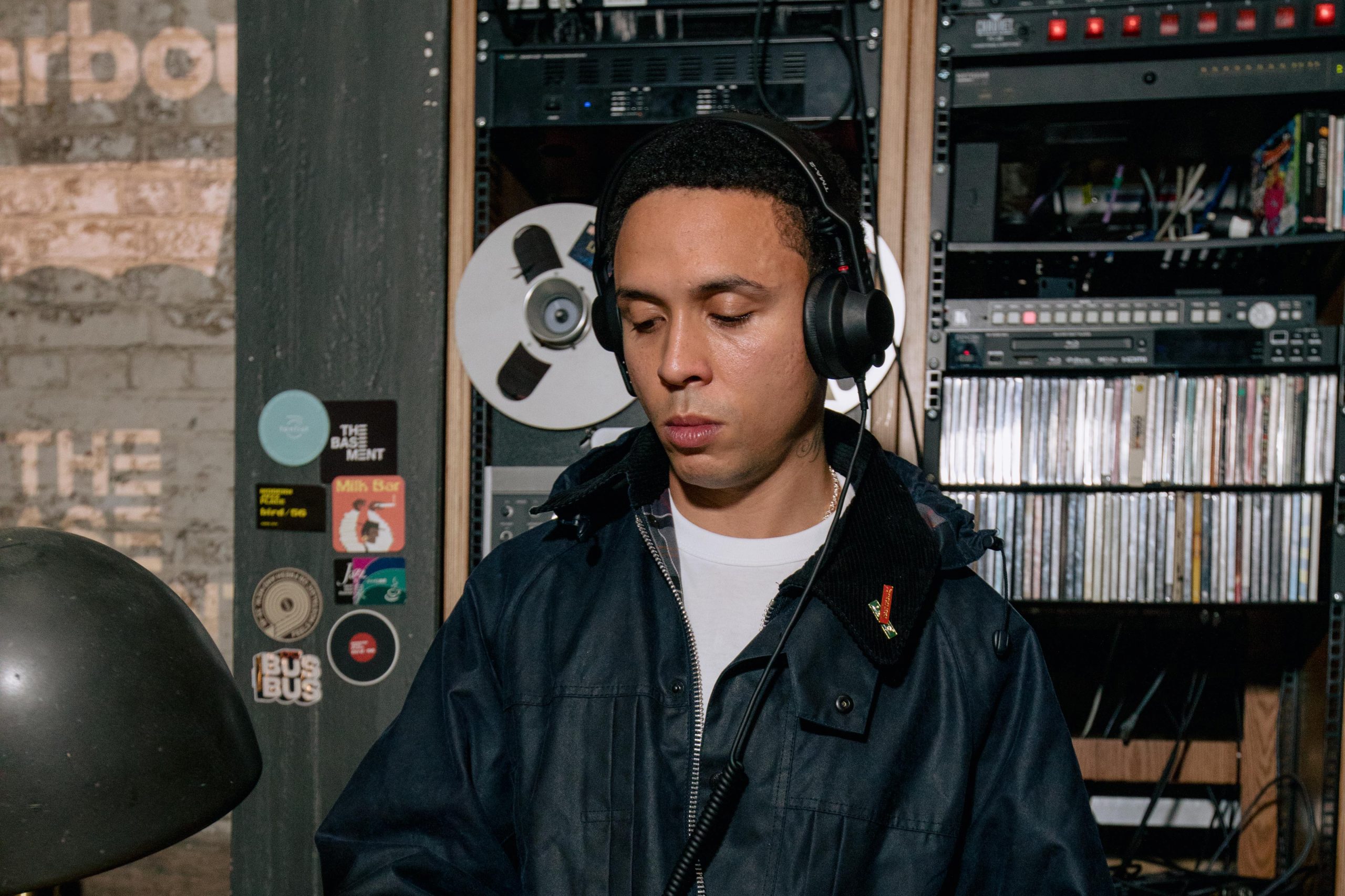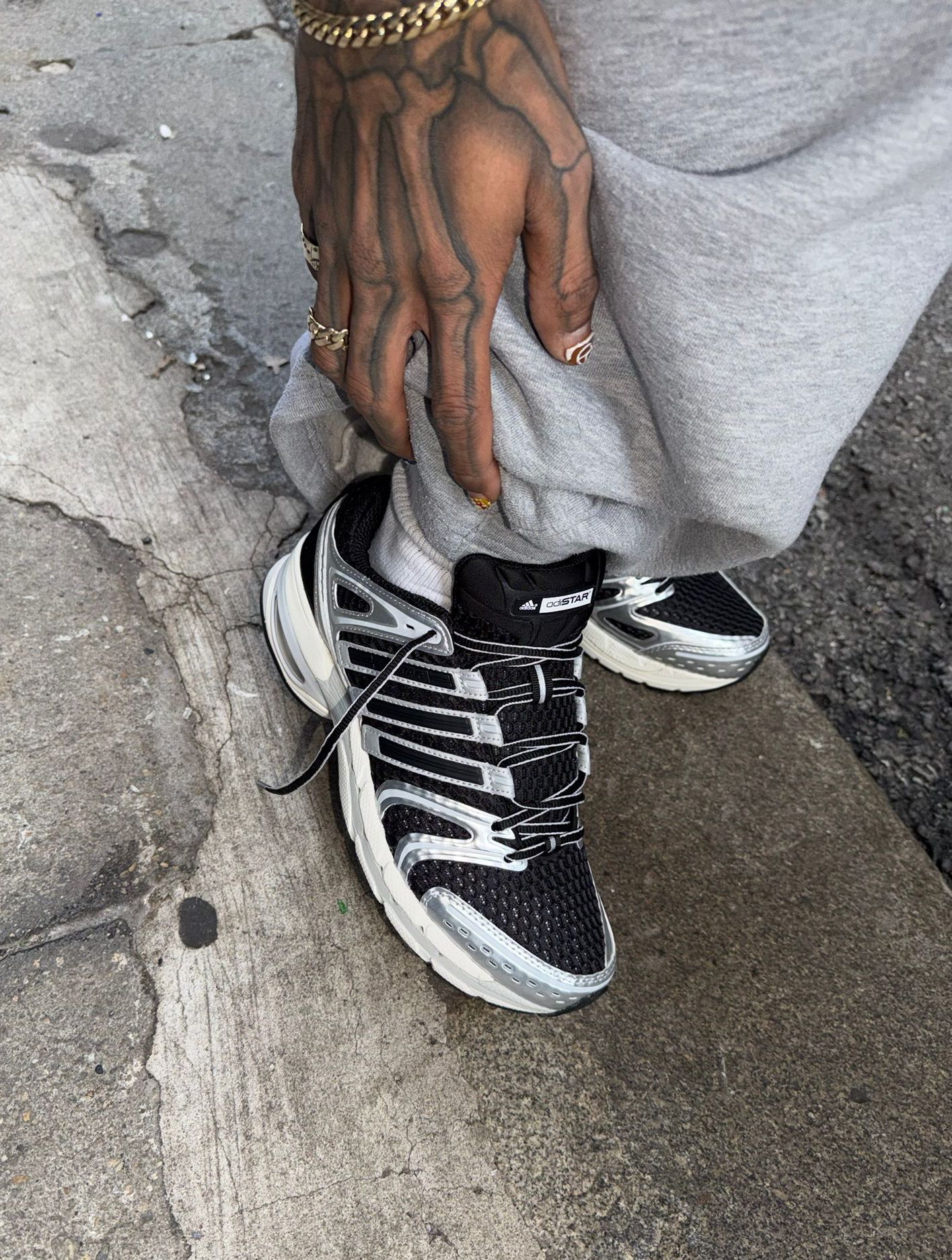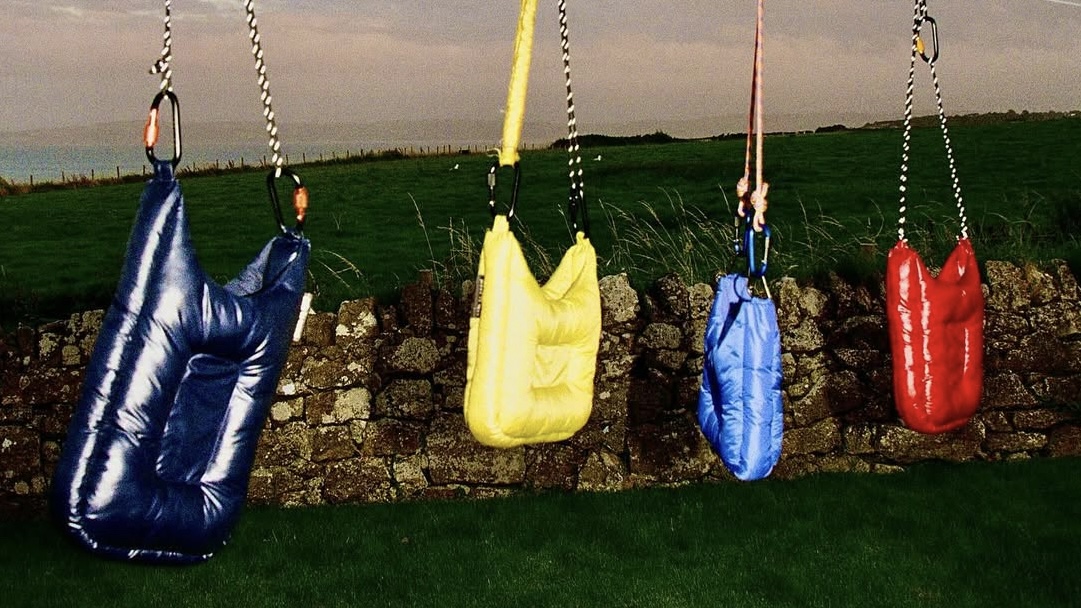Following the recent Comme de Garçons collaboration, BasementApproved charts the turbulent rise and fall of the Nike Foamposite.
Dominating the Basketball footwear market since the Jordan 1 dropped in 1985, by the mid ‘90s Nike was essentially untouchable. But with a reputation as the go-to brand for innovative technologies and iconic silhouettes to protect, Nike had more in mind than the Jordan brand. After their Air sole unit changed the game, Nike’s Advanced Product Engineering division sought to create the next best technology, eventually landing on a sneaker that did what every shoe-wearer desires, especially on the court: a shoe that perfectly moulds to your foot. After years of trial-and-error to perfect the technology, Nike finally introduced their latest innovation to the world in 1997: the Foamposite.
Foamposite was the first of its kind, a polyurethane liquid which is heated and moulded to create a shoe that snugly fits the foot. It was the antithesis to what was available on the market at the time. With most footwear options constructed from suede, leather, nubuck and rubber, the early Foamposite didn’t come cheap, retailing for a hefty $180 at the time and reselling for a similar amount. As a result the Advanced Product Engineering team struggled to get the greenlight from Nike designers and manufacturers. No one had ever moulded an entire upper in one piece before. Luckily for Nike, help would come from South Korean car manufacturer, Daewoo, who agreed to produce and sell the mould to clothing giant for $750,000, allowing the engineer’s vision to become an on-court reality.
With the technology developed and the designs locked in, Nike finally realised the Air Foamposite One and the Air Foamposite Pro in 1997. Both silhouettes had similar designs; the Pro featuring a gel swoosh on the side to set it apart from the One, which forewent branding to showcase the eye-catching and pioneering upper. The team behind Foamposite originally designed it with Chicago Bulls legend Scottie Pippen in mind, but the sneaker caught the eye of fellow NBA All-Star Penny Hardaway, changing everything...

Being one of the hottest NBA stars at the time, Penny had already landed a deal with Nike, and got his very own shoe: the Air Penny 1. The Orlando Magic point guard would go on to acquire the Foamposite One at a meeting with Nike’s product team, the sneaker catching his eye instantly and leading him to boldly proclaim: “That’s it. I want that to be my next shoe”. The team behind the Foamposites were more than happy to move forward with Penny’s endorsement, and quickly got to work. Combining a ‘Royal Blue’ Foamposite upper with a small swoosh on the side and Penny’s ‘1Cent’ badge on the heel and sole, the ‘Royal’ Foamposite One finally was released in 1997 alongside the Air Foamposite Pro

Accompanying the release was one of Nike’s many genius marketing strategies – the ever-memorable phone adverts. This series of print adverts featured shots of classic Nike sneakers with a small swoosh overlaid and a phone number underneath, upon calling the number a bespoke message could be heard. The Air Foamposite 1s were featured alongside the Air Max 95s, Air Griffey Max 1s and Air Jordan XI ‘Concords’ in the campaign.
The Air Foamposite 1’s design was super futuristic. A chunky silhouette paired with a shiny blue upper didn’t exactly resonate with sneakerheads at the time though, the avant-garde nature of the silhouette coupled with the $180 price point making Foamposite adoption slow, especially when a pair of the highly-favoured Jordan 1s were retailing for $150 around the same time. Despite Penny wearing them in the 1997 NBA Playoffs, the release resulted in a series of lacklustre sales reports. The NBA weren’t exactly fans of the sneaker either, stating the blue colorway didn’t match the black Orlando Magic uniform, leading Penny to reportedly colour in the upper with a black Sharpie, commemorated with an official Air Foamposite 1 ‘Sharpie’ colourway release in 2015; harking back to iconic little-known moments of cultural resonance being Nike’s nostalgia-laden bread and butter in the 2010s.

Despite the sneaker’s production setbacks and overall reception, Nike took a step back from the Foamposite Ones and Pros and pushed forward with the Foamposite technology. In typical Nike fashion, the innovative shell was applied across countless releases, offering scope for Nike to perfect the design and finetune the technology over time. Penny’s subsequent sneaker, the Air Penny III (1997), Total Air Foamposite Max (1998)’, Air Flightposite (1999) and the frankly unacceptable Clogposite (2000) are just a few of the silhouettes to feature Foamposite tooling in the subsequent years.
It wouldn’t be until 2001 when the Foamposite Pro saw a comeback, retroed for the first time, seeing seven new colourways released across the next five years. Fast forward to 2007 and the Foamposite One finally saw a return for it’s 10th anniversary, retroed in four colourways including the original ‘Royal’ worn by Penny in 1997. The shoe still didn’t pull in huge sales, aside from the nostalgia-fuelled ‘Royal’ colourway.

As the 2010s got into full swing Nike became more experimental with the Foamposite colourways; leaning into the divisive design to capture the attention of a dare-to-be-different subset of sneakerheads. Notable releases include the ‘Pewter’ (2011), ‘Shooting Stars’ (2012), ‘Stealth’ (2012), ‘Weatherman’ (2013), ‘Safari’ (2013), as well as Foamposite Pro colourways ‘Spider-Man” (2014), “Yeezy’ (2014), not to forget the traditional Chinese art inspired ‘Tianjin’ Foamposite One (2015).
And then the tide turned. Undoubtedly one of the most hyped releases of the early 2010s was the ‘Galaxy’ Foamposite One. Released in 2012 the show featured an Androxmeda inspired upper, with deep blue and purple swirls accented by starry details. The release was one of the most chaotic of all time, with the sneaker reaching outrageous prices at resell (figures which pale in comparison to some sneaker prices today). Legend has it that one man offered to trade his car for a pair. Fifteen years after their initial release, the Foamposite One finally found its footing.

With hype finally reaching new heights, a slew of collaborations followed and in 2012 Nike released the most sought-after Foamposite One to this day, the ‘ParaNorman’. A collaboration with the 2012 animated film ParaNorman, the movie was produced by Nike co-founder Phil Knight’s animation studio LAIKA. The studio’s affiliation with Nike led to the collaborative sneaker, featuring a black upper with a green flame graphic and a glowing green sole with ‘Weird Wins’ printed on the heel tabs. Released alongside a social media campaign asking sneakerheads to submit their ‘weirdest’ childhood photo, another of Nike’s iconic subversive marketing moments which we don’t see as much of today. Current reseller’s price for the ‘ParaNorman’ sits between £2700 to £4700.

Fast forward to 2014 and Kings of streetwear, Supreme, finally turned their hand to the Foamposite. In celebration of Supreme’s 20th anniversary two Foamposite One colourways were released, in black and red respectively, the shoe featured a Versace-esque design with golden patterning which was also used for the accompanying basketball jersey and shorts. The hype around this release was massive, causing the NYPD to instruct Supreme to cancel the instore release and exclusively sell the sneakers online.

Since then the Foamposite hype has faded. While the technology was implemented in further models across the years, Foamposite was slowly phased out as Nike developed modern innovative technologies such as Flyknit.
Until now. In an unexpected collaboration, this November Comme des Garçons released their collaborative take on the Foamposite One. First debuted earlier this year in Tokyo during their Comme des Garçons Homme Plus FW21 ‘Darkroom’ show, the sneaker retains its original silhouette but with a re-imagined upper featuring three-dimensional ripple patterns inspired by a neatly organised Japanese zen garden.

Nike’s prowess when it comes to footwear innovation has never gone unappreciated and although slow off the mark, Foamposite is no exception. The technology presented something brand new at the time, and has had an enduring influence on sneaker design and further tooling development. But when it comes to hype, Foamposite peaked in the early 2010s but has remained a harder sell in the European market. With a multitude of tastemakers and Basement community members copping the recent Comme des Garçons collaboration, are Nike setting the stage for an international ‘posite revival?
Written By
Joe Sparks

What Went Down: The Basement Presents Barbour x Levi’s® Launch Party
- Community
- Photo Series
- 4 minute read





